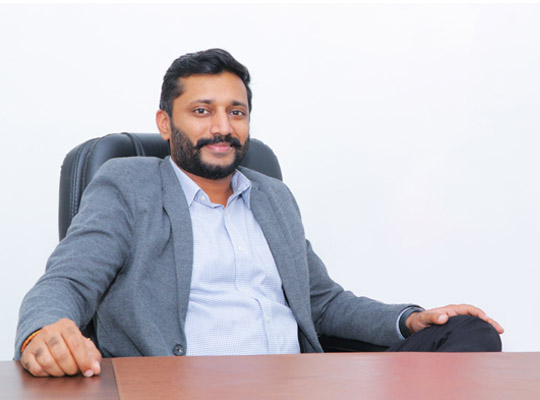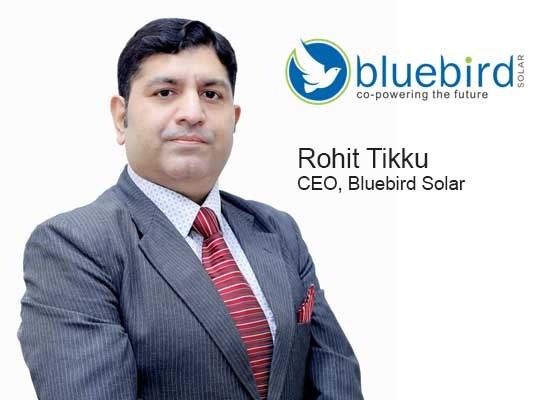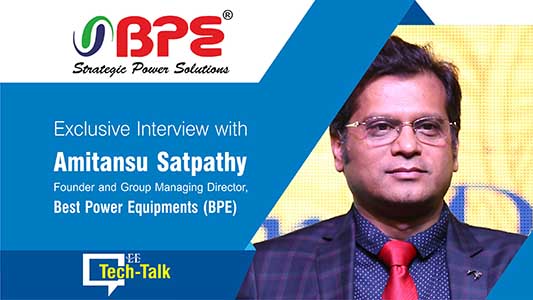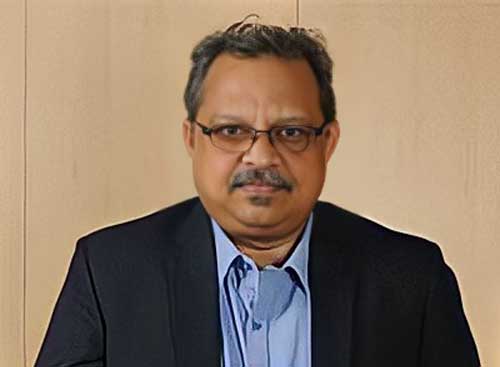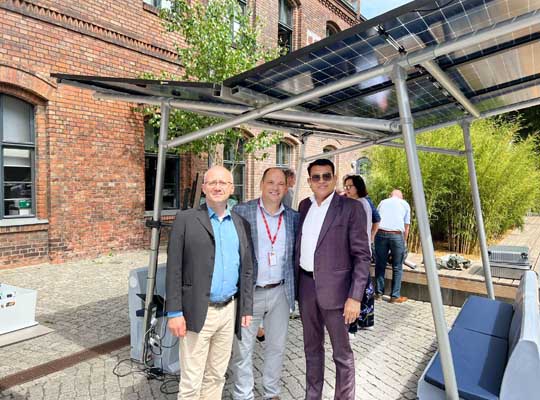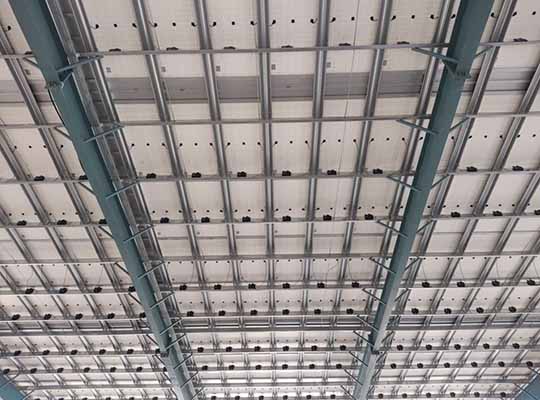Crayon Motors has already introduced a number of both high and low-speed electric two-wheelers, catering to a wide range of customers. This includes products ranging from the lead-acid battery-powered & range-topping lithium-ion battery-powered. Has built a dedicated 40,000-square-foot manufacturing facility with the capacity to produce 20,000 electric scooters per year, aims to increase its manufacturing capacity to over 1,000,000.
Tell us about the company’s both high and low-speed electric two-wheelers and how it caters a wide range of customers?
Crayon Motors was established with the sole purpose of providing e-mobility and being a part of the EV revolution in India. We started by offering electric two-wheelers in the low/city speed range. Our products are designed for intra-city use and have a top speed of 25kmph. Meanwhile, our high-speed model, which is under testing and approval, is already seeing increased demand. Although our products are witnessing a universal acceptance, we have designed them keeping in mind Indian conditions, different target audiences and varied use case scenarios. Our two-wheelers are tailored to Indian roads, weather conditions, and the most basic requirements. Some of the factors considered according to the TG are rider preference – lighter, compact/big and bulky, mileage and pricing. Some use cases have been taken into consideration like most Indians use scooters to go grocery shopping; students take them to tuition/college; many people especially women take scooters to work. Our scooters have features such as digital displays, anti-theft, disc brakes, and GPS monitoring, among others. We have always believed that offering a wider range of solutions for Indian consumers is key as they are selective and are also looking for value for money.
Elaborate with us about the range of products. Tell us more about lead-acid battery-powered & range-topping lithium-ion battery-powered.
Our product range starts at Rs. 52,000 onwards and comes with an amazing two-year warranty. An approximate 70-90K products will be up for sale this financial year.
Lead-acid battery EVs are old technology. Lead-acid-based products are often less expensive to purchase. However, the battery has a shorter life and requires more maintenance than modern technologies like Lithium-ion battery-powered EVs. This was also one of the reasons why Lead-acid battery EV manufacturing has been excluded from the Government’s FAME – 2 policy. While the initial investment is lower, we are seeing a switch in the market trend, towards Lithium. Lithium batteries are easier to maintain and they require almost no maintenance. Since weight is an essential factor in EVs, Lithium batteries lend well to this as they are smaller, lighter, and have a longer product life. Hence, Lithium powered EVs result in relatively better mileages as well. Keeping consumer use ease in mind, we recommend using Lithium-ion over Lead Acid batteries.
Range anxiety certainly is a problem with EVs. While our conventional products provide some of the finest mileages in the industry, there has always been a need for greater mileage too. As a result, dual-battery products have become popular now. Customers can drive greater distances by using two batteries. Consider this to be analogous to carrying a mobile phone power bank. We have taken on the challenge of redesigning automobiles to increase their performance and mileage. Now, we have electric scooters with mileages of up to 170 kmpc as well.
Is there any partnership with the government of India? What are the projects could you please highlight?
We already have a footprint in the three-wheeler segment, with our sister brand, ‘Singham’. Singham offers a wide range of e-rickshaws and e-carts and for these, we have worked with various state governments. For scooters, we are still in discussions with the government, but it is too soon to comment. We are also part of ‘Shoonya’, a zero pollution mobility program under the able guidance of the Central Government’s NITI Aayog.
What are the plans for the Indian Markets?
We have big ambitions for EVs and it extends beyond manufacturing two-wheelers and automobiles. Our goal is to ensure an EV-friendly supply chain. We have made significant investments in Research and Development. As a result, we are investing in technologies such as drive trains, batteries, motors and controller prototypes. We will be looking to establish manufacturing plants for these and other key components as well. The initial stage in this process is the drive train. Good quality motors serve as a stepping stone for EVs. Our long-term goal is to manufacture the whole drivetrain. This is critical to ensuring that the consumer receives a reliable product at a cost-effective price. We aim to and in fact, are excited to meet the demands of consumers across India and make Crayon products available everywhere. In the long run, we are committed to India’s EV dream. We aspire to see India as a worldwide leader in all things EV, and we want to be at the forefront of this revolution. We are following our mission, ‘One Million Dreams’, and steadfastly working towards it. Many state governments have expressed interest in our concepts for developing manufacturing, and we are in discussions with them.
What are the challenges you foresee in taking EVs to the Indian Masses?
The Indian market presents big potential. It’s a huge market in terms of size but it also comes with its peculiar challenges. India is a wide and diver country in terms of expectations, requirements, running conditions, variety of climate and weather factors. Educating the Indian market on product understanding and ultimately leading to acceptance is a challenge. Indian consumers want value for money from a product, whether they spend a rupee or thousands. So providing a competitive price point is a challenge. The fundamental reason for the higher prices of EVs is the large dependency on imports and the growing freight costs tenfold, which has put manufacturers in a difficult position. In India, EV technology is also in its early stages. Countries like China and Taiwan are far ahead in infrastructure and EV adoption. Economies of scale are not yet present, although they are steadily developing. Another consideration is that cells account for a significant portion of the cost of manufacturing. This can be reduced after we achieve economies of scale. We are just reviving out of the horrors of the pandemic and we are already in a sort of strained geopolitical situation due to the ongoing war between Ukraine and Russia. This is leading to continued vulnerability to price, volatility, variances and availability of EVs in the short term period. Current technologies, particularly those based on lithium, will continue to rely on imports. As a result, innovative technologies with less reliance on imports will be necessary.
The path forward is clear to us. It is not only merely about the product, but the entire user experience. This starts from the moment you buy an EV. While the product remains at the centre, we want the complete experience to be enjoyable for the consumer. This includes simple access to components, dependability, simplicity of service, and ease of maintenance. One such move is our recent collaboration to provide roadside assistance, PAN India. Users of Crayon can now enrol into the RSA scheme and ride their vehicles, without any worries.
While these challenges will remain, we should also be aware that India is a global economy that’s an active part of an interdependent ecosystem. ‘Atmanirbharta’, the initiative taken by the Government of India, will play a pivotal role in reducing the global pressures of price rise and volatility. India needs to aim toward becoming self-sufficient.
What are the key focus areas for the year 2022-2023?
We are currently conducting intense testing of our high-speed two-wheelers to finally launch. These products are designed, developed, and manufactured in India and will be eligible for FAME-II subsidies. We are planning to launch four distinct products during this financial year. The entire product line is currently in the trials, testing and approvals phase. To improve the overall experience of the customer, we are investing big in customer-dealer education on EVs. We have also taken it upon ourselves to train mechanics to further enhance the EV experience.
Motor manufacturing has been one of the critical projects for us. In this regard, we have successfully prototyped our in-house motor and are initiating the process for commercial production.
We are additionally working on developing our drive-trains with a team of experts. This is a focus area because if drive trains are conducive to Indian roads, then it ensures longevity and better battery efficiency of the electric vehicle. Motorbikes are also in the anvil but not in this financial year.
The EV industry in India is fast growing. As an EV and EV supply-chain manufacturer, you cannot grow in isolation. The EV industry is interdependent. Development and synergies need to be explored and undertaken to create a friendly ecosystem. Product development is costly, and working together to realise the overall dream of e-mobility is the way to go. We are focusing on the manufacturing of Motors, Controllers, and Batteries, which will be available for other manufacturers to use. We are already having discussions with other stakeholders in the industry and are open to more such discussions.


